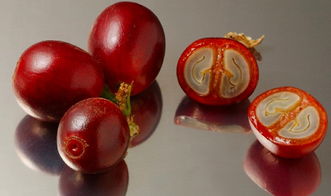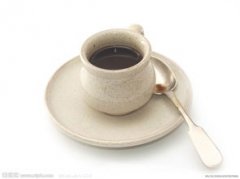What is Coffee Coffee
Coffee "(Coffee) (the word comes from a small town in Ethiopia called kaffa, and in Greek" Kaweh "means" strength and passion ". Tea, coffee and cocoa are called the three major drinks in the world. Coffee tree is a small evergreen tree of Rubiaceae. Coffee for daily consumption is made from coffee beans combined with various cooking utensils, and coffee beans refer to the nuts in the fruit of coffee trees, which are then roasted by appropriate roasting methods. There are other books with this name.

explain
1. English [coffee]
two。 Small evergreen trees or shrubs of tropical and subtropical regions. Leaves long ovate, flowers white, bearing crimson berries. There are small fruit, medium fruit, big fruit coffee and so on. The seed is fried and ground into powder to make a beverage, which has an exciting effect and is native to Ethiopia.
3. Coffee beans [Blue Mountain, Cubita, Mocha, Naga Xuefei. Take the lead]
4. Coffee powder: a powder made from coffee seeds.
5. Coffee drink
6. Coffee biscuits: made from coffee beans ground into powder
7. Coffee cold drink: coffee as the raw material, in the summer, is people's favorite.
Coffee history
There are different legends about the origin of coffee. Among them, the most common and popular story is the Shepherd's Coffee. Legend has it that there was a shepherd who happened to find his sheep jumping and dancing while herding sheep. If you look carefully, it turns out that the sheep ate a kind of red fruit that led to their funny behavior. He tried to pick some of these red fruits to boil, but the room was full of fragrance, and the juice was even more refreshing and refreshing after drinking it. Since then, this fruit has been used as a refreshing drink and has been well received.
In ancient times, Arabs first dried and boiled coffee beans and drank the juice as stomach medicine, thinking it was helpful to digestion. It was later found that coffee had a refreshing effect, and because Islamic rules forbade believers to drink alcohol, coffee was used instead of alcohol as a refreshing drink. After the 15th century, Muslims who made pilgrimages to the holy land of Mecca gradually brought coffee back to their places of residence, making it gradually spread to Egypt, Syria, Iran and Turkey. The entry of coffee into Europe should be attributed to the Ottoman Empire of Turkey at that time. Because the coffee-loving Ottoman army marched westward to Europe and was stationed there for several years, when the army finally withdrew, it left behind a large number of supplies, including coffee beans. People in Vienna and Paris were able to develop European coffee culture with these coffee beans and cooking experience gained from the Turks. The war was originally occupied and destroyed, but it unexpectedly brought about cultural exchange and even integration, which was unexpected by the rulers.
Westerners are familiar with coffee with a history of three hundred years, but in the East, coffee has been widely used as a drink in all walks of life in the East. Coffee appeared earliest and most accurately in the 8th century BC, but as early as Homer's works and in many ancient Arab legends, a magical, dark, bitter, and highly stimulating drink has been recorded. Around the 10th century, Avicenna used coffee as a medicine to treat diseases. There is also a strange story from the 15th century in which it is said that a Yemeni shepherd saw a group of goats picking reddish berries from a bush. Soon the goats became restless and excited. The shepherd reported this to a monk, who cooked some berries. Then extract a bitter, strong drink that can drive away drowsiness and drowsiness.
Although coffee was found in the Middle East, coffee trees first originated in Africa, a region now belonging to Ethiopia, called Kaffa, from which coffee spread to Yemen, Arabian Peninsula and Egypt, where coffee developed rapidly and soon became popular in people's daily lives.
By the 16th century, early merchants had sold coffee in Europe, thus introducing coffee as a new drink into Western customs and life. The vast majority of coffee exported to the European market comes from Alexandria and Smyrna, but with growing demand and high tariffs imposed by import and export ports, as well as increased knowledge of coffee planting, dealers and scientists are experimenting with transplanting coffee to other countries. The Dutch planted coffee trees in their overseas colonies (Batavia and Java), and the French in Martinique (in Latin America) in 1723, and then in the Antilles. Later, the British, Spaniards and Portuguese began to invade the tropical coffee-growing areas of Asia and America. Coffee cultivation began in northern Brazil in 1727, but poor weather conditions gradually shifted the crop to other regions, first in Rio de Janeiro, and finally to Sao Paulo and Minas (circa 1800-1850). Here coffee found its ideal growing environment. Coffee cultivation grew here until it became Brazil's most important source of economy.
It was between 1740 and 1850 that coffee cultivation reached its highest popularity in Central and South America.
Although coffee was born in Africa, cultivation and household consumption were introduced relatively recently. In fact, it was the Europeans who brought coffee back to its homeland and introduced it into their colonies, where it flourished because of favorable land and climatic conditions.
Main components
Caffeine
It has a particularly strong bitter taste and stimulates the central nervous system, heart and respiratory system. Appropriate amount of caffeine can also reduce muscle fatigue and promote digestive juice secretion. Because it promotes kidney function, it is diuretic and helps the body to expel excess sodium ions from the body. But eating too much can lead to caffeine poisoning.
Tannic acid
Boiled tannic acid will decompose into pyrouric acid, so coffee that has been brewed for too long will taste worse.
Fat
The most important of these are acidic fat and volatile fat.
Acid fat
That is, fat contains acid, its strength will vary according to the type of coffee.
Volatile fat
Is the main source of coffee aroma, it is a kind of aroma will emit about 40 kinds of aromatic substances.
Protein
The main source of calories, the proportion is not high. Most of the protein in coffee powder will not dissolve out when brewing coffee, so the intake is limited.
Sugar
Raw coffee beans contain about 8% sugar. After roasting, most of the sugars are converted to caramel, which browns the coffee and combines with tannins to produce sweetness.
Fibre
The fiber of raw beans will be carbonized after baking and combine with caramel to form the hue of coffee.
Mineral substance
Contains a small amount of lime, iron, phosphorus, sodium carbonate and so on.
Table of nutritional components of coffee
Every 100 grams of coffee beans contain 2.2 grams of water, 12.6 grams of protein, 16 grams of fat, 46.7 grams of sugar, 9 grams of cellulose, 4.2 grams of ash, 120 milligrams of calcium, 170 milligrams of phosphorus, 42 milligrams of iron, 3 milligrams of sodium, 0.12 grams of vitamin B2, 3.5 milligrams of nicotinic acid, 1.3 grams of caffeine and 8 grams of tannins. Every 100 grams of coffee extract contains 99.5 grams of water, 0.2 grams of protein, 0.1 grams of fat, 0.1 grams of ash, trace sugars, 3 mg of calcium, 4 mg of phosphorus, 2 mg of sodium, 0.01 mg of vitamin B2 and 0.3 mg of nicotinic acid. Dissolve 10 grams of coffee in hot water with 0.04 grams of caffeine and 0.06 grams of tannins.
Important Notice :
前街咖啡 FrontStreet Coffee has moved to new addredd:
FrontStreet Coffee Address: 315,Donghua East Road,GuangZhou
Tel:020 38364473
- Prev

How to taste coffee 5 details to note
Coffee tastes different, so you can't drink three or four cups in a row like tea or cola, and the amount of formal coffee cup is the most appropriate. Ordinary drink coffee to 80-100cc for the right amount, sometimes if you want to drink three or four cups in a row, then you have to dilute the concentration of coffee, or add a lot of milk, but still have to consider the physiological needs of the degree, to add and subtract coffee
- Next

The advantages and disadvantages of drinking coffee should not be consumed too much.
Taboos on drinking coffee 1. Remember that coffee should not be served with tea. Tannic acid in tea and caffeine reduces iron absorption by 75%. It is suitable to use warm boiled water to serve. The tannic acid in tea and coffee reduces calcium absorption. Therefore, the best time to drink tea and coffee is to choose between two meals. Caffeinated drinks and foods can cause nausea, vomiting and vomiting after being consumed in large quantities by pregnant women.
Related
- Beginners will see the "Coffee pull flower" guide!
- What is the difference between ice blog purified milk and ordinary milk coffee?
- Why is the Philippines the largest producer of crops in Liberia?
- For coffee extraction, should the fine powder be retained?
- How does extracted espresso fill pressed powder? How much strength does it take to press the powder?
- How to make jasmine cold extract coffee? Is the jasmine + latte good?
- Will this little toy really make the coffee taste better? How does Lily Drip affect coffee extraction?
- Will the action of slapping the filter cup also affect coffee extraction?
- What's the difference between powder-to-water ratio and powder-to-liquid ratio?
- What is the Ethiopian local species? What does it have to do with Heirloom native species?

